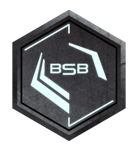SEINE Marketing Operations Release
84522-1004.877
From the Desk of the Director to our Shareholders;
Attention in the Illal Financial Weekly has recently been given to several outlandish claims by our competitors regarding our weapon systems and future product development. While not seeking to give such claims legitimacy, SEINE feels that these points should be addressed in order to assuage our board members that work continues tirelessly to ensure continuing Sentium market share dominance.
 Conquistador, on February 03 2013 - 10:09 PM, said:
Conquistador, on February 03 2013 - 10:09 PM, said:
With regards to use of the REV-GL as an area denial weapon, the current iteration of our product model maintains an unacceptable combination of high fire rate, high damage throughput, low heat generation, large area-of-effect, and lack of immediate grenade detonation. Simply reducing damage throughput is an insufficient solution for such a “forgiving” weapon. For your suggestion to be considered reasonable, an additional attribute would need to be removed, such as applying limiters to rate of fire by increasing heat generation or increasing reload time.
Area-denial weapons are designed to deny an area; tautological though it may be, the Model 140 RevGL requires its current suite of characteristics to remain a viable product line. SEINE sees the issue at heart to be the DPS the weapon generates, and thereby the damage presented to a target. Increasing heat generation through heatsink savings only limits DPS when at or near heat tolerance limits, not at the beginning of an engagement. Lowering the reloader speeds does decrease the DPS of the weapon, but introduces significant non-firing pauses to any attempted area-denial usage, giving opposing forces ample opportunity to directly circumvent such operations, leading to loss of effectivity. Similarly, reducing area-of effect makes area-denial enfilade difficult except within only the smallest of chokepoints, again leading to loss of overall effectivity.
Lowering damage while maintaining other weapon characteristics reduces weapon DPS, while continuing to provide continuous area-denial, as well as the ability to deal with any potential mass-rush circumstances by giving pilots a buffer of additional heat capability to work with, should an attempt to break the denial take place. As well, lowering damage both reduces total potential damage
AND increases the time of exposure required to produce that damage.
 Conquistador, on February 03 2013 - 10:09 PM, said:
Conquistador, on February 03 2013 - 10:09 PM, said:
Insufficient solution, which reduces effectiveness of turret operation against A-class light sabers while retaining effectiveness against heavier models. Additionally, motor traversal reduction does not address the issue of predictable hands-free damage, which has rendered our pilots complacent due to lack of pilot input. The utilitarian nature of the weapon is much less of an issue, by comparison.
It is difficult without a field trial to impress upon the general public just how slowly Stalwart motors actually operate; that said, SEINE recommends motor tuning such that even cumbersome Prosk C-class units at nominal walk speeds be able to out-traverse the motor. Maintaining full transverse speed should not result in a firing solution taking place.*
* Sentium corporate reminds pilots not to stand in front of, or attempt to look down the barrels of a loaded or operating MG turret. Serious injury could occur. Side effects may include headache, dry eye, sudden and permanent explosive dismemberment, and death. Ask your doctor if MG Turret is right for you.
After several weeks of having the elevators to the Sentium Manufacturing Division on sudden and irreconcilable maintenance, The Manufacturing and Production Director came up with the brilliant solution of only installing half as much traversal track, effectively halving production costs (while also halving turret traversal). Marketing suggests this only as a brainstorming exercise, as it is unknown whether our Prosk-led Product Testing Division possesses sufficient cranial capacity to comprehend placing turrets that can only fire in the forward arc. Studies are on-going.
 Conquistador, on February 03 2013 - 10:09 PM, said:
Conquistador, on February 03 2013 - 10:09 PM, said:
Because we do not believe our corporate R&D capable of solving current issues with guided projectile behaviour, we would like to propose a compromise: make lock-on more persistent when line-of-sight is lost, and adjust lock-on algorithms to apply homing algorithms to fixed terrain (as opposed to moving opponents). Lock-on persistence allows curvature of missiles around obstacles, and increased player input into hellfire targeting mechanisms shift the onus of responsibility from our R&D to our pilots, and will require training to address additional skillsets such as prediction.
While SEINE places its full faith and credit into its R&D Division, and also fails to see how locking on to terrain differs from current "dumb-fire" operational practice (unless as a suggestion for smaller initial launcher spread of projectile swarms, which would be a general upgrade to the launcher rather than specific to the homing mode), we do find persistent lock-on to be presently acceptable, given an upgrade to the homing sensitivity module. SEINE is also hard at work on an upgrade to existing radar systems to allow pilots the potential to share combat data on enemy positions for indirect fire support. Sentium is of the understanding that Prosk will have their sensor upgrade to detect lock-on behavior ready to deploy around the same time.
 Conquistador, on February 03 2013 - 10:09 PM, said:
Conquistador, on February 03 2013 - 10:09 PM, said:
We still do not believe laser-targeting is necessary for this weapon, as it maintains extreme levels of effectiveness with or without remote detonation. Perhaps simply removing remote detonation altogether will be a sufficient solution_
SEINE has reinforced its Product Service and Support center and attendant data lines to deal with potential massive issue ticket generation should Prosk decide on this course of action, despite the fact that we do not manufacture said TOW, and recommend Prosk do the same.
 Conquistador, on February 03 2013 - 10:09 PM, said:
Conquistador, on February 03 2013 - 10:09 PM, said:
Protacted engaments using the HEAT cannon have never been an issue. It is the HEAT’s superiority as a dueling primary weapon in small engagements that has built upon its absurd popularity amongst Prosk veterans. Modifications to heat buildup on a Class I (Charged Burst) weapon do not address its behaviour as the only primary weapon that can splash around forms of cover. ...
We maintain (stubbornly, so) that reduction to the area-of-effect is paramount to managing this weapon’s demand.
SEINE takes this opportunity to remind Prosk of the existence of their own products, the Model 140 RevGL, and the Model 58 EOC Repeater, which are both primary weapon systems designed for and able to apply splash damage around obstacles.
Gun camera footage analyzed from HEAT Cannon users has shown that an AOE reduction will do little to change weapon behavior as a burst-damage powerhouse. While existing AOE makes the weapon relatively easier for pilots to aim, reducing that characteristic alone just marginally increases the skill floor. Increasing heat generation (similar to the situation with Block III EOC Repeaters before Prosk engineers found that sandwich left in the heatsink press by a careless visiting Sentium director) leaves the weapon easy to aim, but reduces pilot incentive to "hunt" for damage by preemptively firing on corners, due to the tactical heat disadvantage such hunting burdens them with, when and if the target presents itself more directly. SEINE sees this as appropriate due to the tactical choice given to the pilot, while disincentivizing potentially wasteful behavior (but maintaining newer pilot ease-of-use).
 Conquistador, on February 03 2013 - 10:09 PM, said:
Conquistador, on February 03 2013 - 10:09 PM, said:
If this extension to Class VI charge time is coupled by an internal “reset” mechanism that prevents “pre-spin” behaviour, we deem this suggestion acceptable. Time before firing must be counted from the moment the pilot pulls the trigger, rather than the state of the barrel’s motion. The moment our pilots release the trigger, the counter must reset to zero.
The
entirely accidental release of a swarm of starved batbadgers into the Programming Division has produced assurances that this is how the Vulcan currently operates. The pilot must always go through the full "spin-up" time before the weapon fires, regardless of prior weapon rotational speed.
 Conquistador, on February 03 2013 - 10:09 PM, said:
Conquistador, on February 03 2013 - 10:09 PM, said:
Finally, I would like to remind you that (in context of Project PARIS) any modification to our product portfolio that fosters more intelligent (and greater-skilled) usage of weapon systems is to be encouraged.
At Sentium, we remind our dear shareholders that we take the greatest care to ensure not to convolute skill with complexity or difficulty. Skill is innovation and the creative dynamic recombination of unique characteristics to achieve combat effectiveness, not simply tools which are needlessly complicated or difficult to understand and implement. We see preserving those unique characteristics as paramount over weapon systems that reward pilots only who devote themselves utterly to comprehending their obtuse Prosk-built idiosyncrasies.
 Conquistador, on February 03 2013 - 10:09 PM, said:
Conquistador, on February 03 2013 - 10:09 PM, said:
...our human resources department has typically used weapons difficulty as a method of weeding out our weaker stock (and sending them to your Sentium offices for future employment, with a letter of recommendation).
Sentium is an equal opportunity employer, and we have continual openings in our exciting Product Testing Division, where you could be involved in such engaging projects as "Dodge the Detonator" and "Don't Get Shot by the Sharpshooter". Special pilots may even be selected for our Exotic Disease Collection and Retention Division or mysterious
Project X, at the very bottom of the deepest hole ever dug on Illal! Prior Prosk employment a plus!
SEINE Senior Marketing Director
Heinrick "Gustav" Eyjafsson































